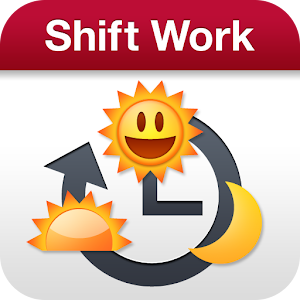The Perks and Perils of Split Sleep Schedules for Shift Workers

One of the most difficult aspects of shift work is figuring out when to sleep. You may get right to sleep after work but wake up earlier than intended, alert and unable to return to sleep. It may feel fine in the afternoon, but by the time the next shift starts exhaustion sets in.
Some shift workers adapt by splitting their sleep into two shorter periods each day. It works like this: sleep 4 to 5 hours in the morning, wake up in the early afternoon, and then take a long nap 2 to 3 hours before work.
Those with split sleep schedules say it allows for more flexibility to participate in daytime and early evening activities including parenting, socializing and running errands.
A limited body of research topic suggests a split sleep schedule is no different than sleeping exclusively during the daytime. Alertness levels are about the same in both conditions. It’s up to shift workers to decide what strategy is the best fit to get the maximum amount of sleep.
A 1998 study used computer modeling to test different sleep approaches for shift workers, including split sleep schedules. Results show a long late nap may increase alertness and minimize risk of injury or mistakes when the nap is taken around 1 a.m. The unfortunate reality is most overnight shift workers don’t have that luxury.
The authors determined the next best time for a nap is leading up to the start of work. This may help but it’s likely you will find yourself struggling to stay awake for most of your shift, especially between 2 a.m. and 6 a.m.
The study included a model for sleeping exclusively during the daytime. The results were nearly identical sleeping a full 7.5 consecutive hours in the daytime leads to the same overnight alertness levels, however reduced, as napping before work.
A NASA funded experiment by researchers at the University of Pennsylvania Medical School came up with the same conclusion. The study looked at whether astronauts and mission control personnel could perform sufficiently under nontraditional sleep schedules, including split sleep.
Researchers monitored 90 subjects in a controlled laboratory with no external time cues for 14 consecutive days. Participants were assigned to one of 18 strict sleep conditions that included a mix of split sleep schedules and full daytime sleep schedules. The control group slept at night for about eight hours. The participants were given a series of alertness tests every two hours they were awake.
There was no measurable difference between split sleep schedules and daytime sleep, as long as the total sleep length was sufficient. The authors concluded split schedules have no negative impact and may allow more lifestyle flexibility for civilian shift workers.
Both approaches have their downsides. Staying asleep through the afternoon may be a challenge, especially during the summertime. Taking a late nap may make it difficult to fall asleep after work. Insomnia is a common complaint for all types of shift workers.
There are several other things you can do to make the shift work experience more tolerable. When used properly caffeine can be a boon for shift workers. A recent study found drinking coffee at the beginning of the shift can cut down on workplace mistakes.
Bright light therapy can also help increase alertness. The Sleep Education blog recommends using a light box for 15 minute increments at your workstation during the first half of your shift. Be careful not use a light box towards the end of your shift. Exposure to bright light close to bedtime may make it difficult to sleep.
Some shift workers describe feeling a surge of energy towards the end of shifts, especially after dawn. It’s important to avoid sunlight before trying to sleep. We suggest wearing dark sunglasses on the commute home from work. Also try to make your bedroom as dark as possible, by using blackout curtains.
High temperatures and daytime noise are two other common environmental sleep disruptions for shift workers. The Sleep Education blog suggests running the air conditioning along with a loud fan or noise machine.
Slightly adjusting your sleep schedule on days off may also help your body recover from shift work related sleep deprivation
Article Source: http://sleepeducation.blogspot.com/2010/06/perks-and-perils-of-split-sleep.html
Image Source: https://lh6.ggpht.com/cT9st2MvvmjsWLbp_29MZq4VR08k1kdRHkhZA1gOyGGWC7PkFja6BhxyRcZ6yQ21zQk=w300
VOCABULARY WORDS:
1. Shift work = is an employment practice designed to make use of, or provide service across, all 24 hours of the clock each day of the week (abbreviated as 24/7).
2. Surge - (n.) a sudden powerful forward or upward movement, especially by a crowd or by a natural force such as the waves or tide
3. Boon - (n.) a thing that is helpful or beneficial.
4. Insomnia= (n) habitual sleeplessness inability to sleep.
5. Deprivation= (n) the lack or denial of something considered to be a necessity
6. Peril = (n.) serious and immediate danger.
7. Perk = (n.) become more cheerful, lively, or interesting.
QUESTIONS FOR DISCUSSION:
1. What time do you usually go to sleep?
2. Do you work in a shifting schedule?
3. What are the things that can help you have a good sleep after working in a shifting schedule?
4. Do you agree with the article / Why or Why not?
5. What do you think of sleep deprivation?
6. Which is better, a few hours of deep sleep or long hours of sleep?